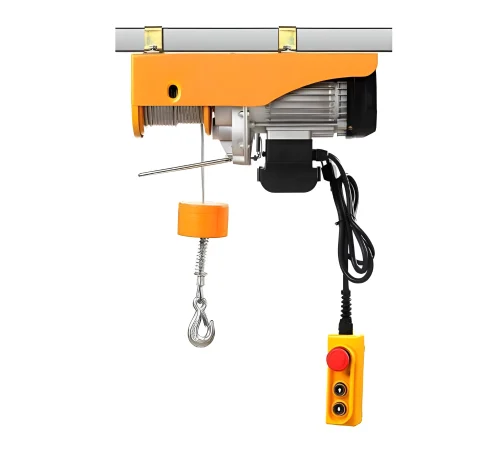Electric hoists play a crucial role in various industries, from construction to manufacturing, by efficiently lifting and moving heavy loads. Enhancing their performance and durability is paramount to ensure smooth operations and minimize downtime. Through technological advancements and strategic upgrades, electric hoists can be optimized to meet the evolving demands of modern industrial settings. One significant aspect of upgrading electric hoists involves improving their lifting capacity. By enhancing motor power and gearbox efficiency, hoists can handle heavier loads without compromising safety or performance. Upgraded hoists equipped with powerful motors can lift larger payloads, increasing productivity and reducing the need for multiple lifts or manual labor. Moreover, advancements in motor technology, such as the use of brushless motors, contribute to greater energy efficiency and prolonged lifespan, making them a sustainable choice for industrial applications. In addition to lifting capacity, enhancing the speed and precision of electric hoists is essential for maximizing efficiency in material handling processes.

Upgrades in control systems, such as the integration of variable frequency drives VFDs, enable smoother acceleration and deceleration, allowing for precise positioning of loads. This not only improves operational efficiency but also reduces wear and tear on hoist components, thereby extending their service life. Furthermore, the implementation of advanced braking systems enhances safety by ensuring reliable stopping and holding of loads at any point during lifting and lowering operations. Durability is another critical aspect that can be enhanced through various upgrades to polipasto electrico. Utilizing high-strength materials and advanced manufacturing techniques in hoist construction improves resistance to wear, corrosion, and fatigue, thereby increasing longevity and reducing maintenance requirements. Additionally, incorporating protective features such as dust seals, corrosion-resistant coatings, and overload protection mechanisms further enhances durability and reliability in harsh operating environments. Furthermore, advancements in hoist design and engineering facilitate easier maintenance and servicing, minimizing downtime and optimizing overall operational efficiency.
Features such as modular components, quick-access panels, and diagnostic systems enable swift identification and resolution of issues, ensuring minimal disruption to production processes. Moreover, remote monitoring and predictive maintenance capabilities allow operators to proactively address potential issues before they escalate, maximizing uptime and reducing repair costs. Safety is paramount in industrial settings, and upgrading electric hoists with advanced safety features is essential to mitigate risks and ensure compliance with regulatory standards. Integration of proximity sensors, emergency stop mechanisms, and overload protection systems enhances operator safety and prevents accidents caused by equipment malfunction or human error. Additionally, incorporating ergonomic design elements, such as adjustable controls and anti-vibration technology, reduces operator fatigue and improves comfort during prolonged use. In conclusion, enhancing the performance and durability of electric hoists through strategic upgrades is essential for optimizing productivity, ensuring safety, and minimizing operational costs in industrial environments.